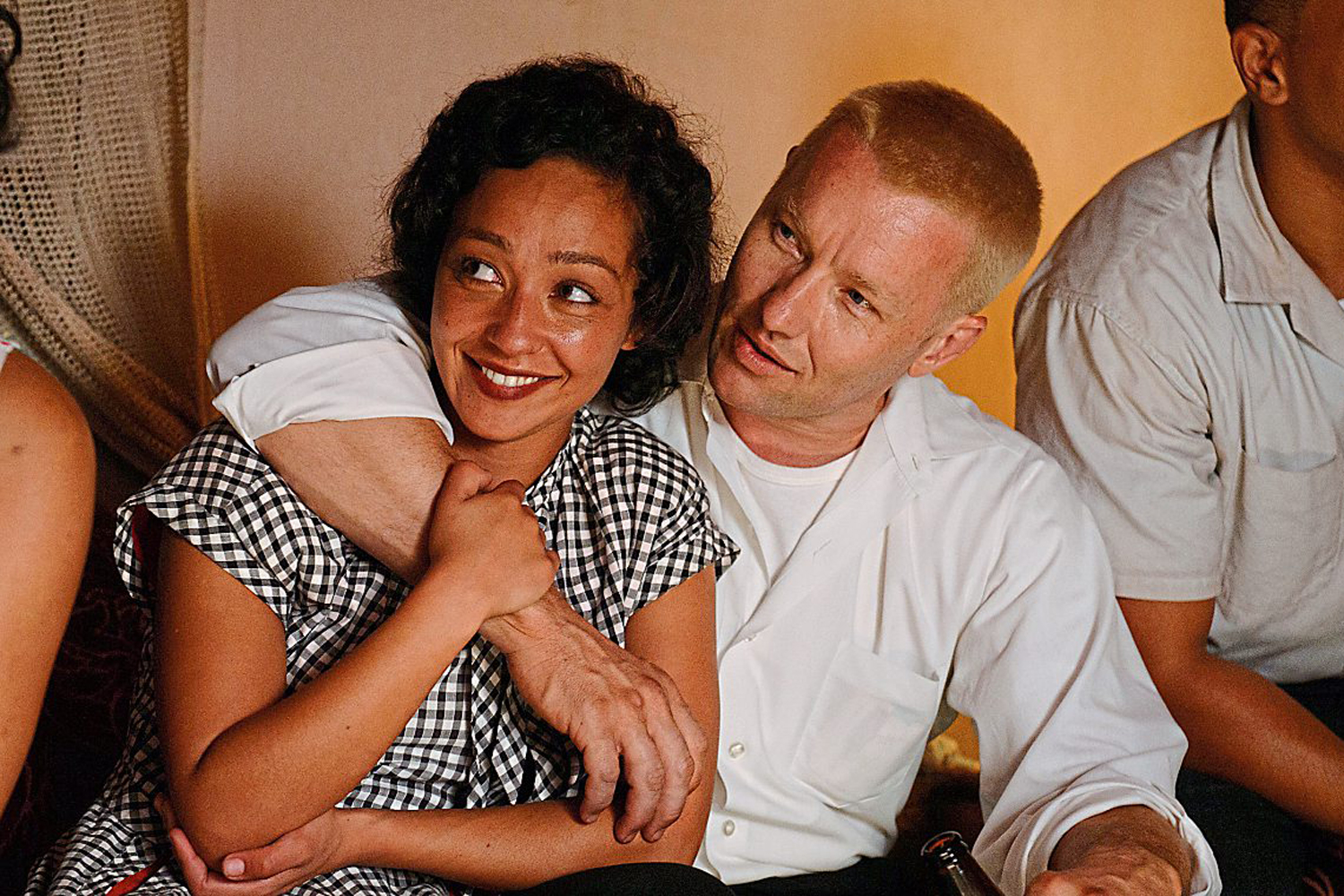Loving is sweet, but ultimately hollow

Love trumps hate – Loving tells the story of Richard and Mildred Loving, the couple whose victory against the Supreme Court legalized interracial marriage in the United States. | Photo courtesy of Focus Features
Based on the historical Supreme Court ruling Loving v. Virginia, which legalized interracial marriage, Jeff Nichols’ new film Loving tells the story of Richard and Mildred Loving, the case’s defendants and the couple whose love for each other became a landmark victory in the fight for civil rights.
It is evident that Nichols, who both wrote and directed the film, wants to move his audience — and he largely succeeds. Loving is told sweetly and charmingly, a quiet story documenting the relationship of two Virginians whose lives gradually call the nation’s attention. But for every shared smile, quiet embrace and lingering moment of rural beauty, Loving also sacrifices true drama: the key to narrative power and the essential component to any good film.
The movie opens with Mildred (Ruth Negga) telling Richard (Joel Edgerton) that she is pregnant. From the way she averts his eyes, it is clear that the couple doesn’t know right away if this is good news or not; Mildred is black, and Richard is white, and the couple lives in a town in Virginia not far from the nation’s capital. But Richard doesn’t hesitate. He proposes to Mildred and tells her that he will build her a house in the county where both of them were raised. He moves in with Mildred and her family, and the two begin planning the life they will spend together.
Until one day when both of them are arrested. They are given an ultimatum: leave Virginia, or go to prison. Thus begins the Lovings’ journey across state lines and back again, the whole time having children, raising them, and building the life they promised each other. One day in the middle of this, Mildred writes a letter to politician Robert Kennedy about the injustice she and her husband experienced. The long fight to the Supreme Court begins.
Despite the significant and heart-wrenching magnitude of the couple’s situation, most of the conflict in the film is either expository or distant from the protagonists. Essentially, the film’s only conflict is the macro one: the fight for legitimacy that takes place in Washington, D.C. while Mildred and Richard live out their lives in Virginia. This wouldn’t be a problem, except the film does not follow the conflict where it goes. Instead, the film stays with the Lovings, and the Lovings experience little conflict in their home.
Loving must be the first film made about a relationship in which the couple never fights. The audience also never discovers how Richard and Mildred met. What drew them to each other, fostered their attraction, made seeing each other worth more than any political force in the country? In any other love story, the audience would know. The Lovings’ grappling with the humiliating illegitimacy of their union is undoubtedly heartbreaking, but loving each other too much is not enough for character development.
After moving back to Virginia, the Lovings raise their children in the middle of fervently green fields, constantly looking over their shoulder for people and police who want to attack them. But these antagonists, in the latter half of the film, rarely show up. And except for a singular, recognizable police officer who continues to haunt the Lovings, there truly is no tangible opposition to their relationship in this part of the film.
If Loving wants its audience to believe the victory, it must have them believe the stakes. And there is no doubt that racism is alive now, exponentially so 50 years ago. For a southern county so deeply yet subconsciously embroiled in its time, the tension goes shockingly easy on the protagonists.
It is not that the audience should have a hard time believing that racism can be more insidious than blatant, but in the South in the sixties? The largely saccharine portrait Nichols paints of race relations in this setting, combined with the drama that is kept at bay simply because it is happening in a far away place, is enough for the audience to question the intent of the film.
Loving is emotionally resonant, but ultimately disappointingly hollow. If the audience never questions the affection the couple feels toward each other and is only occasionally thrust into the midst of conflict, then what exactly is it about the film that moves people?
It is, without a doubt, the chemistry between Edgerton and Negga. The audience will have no trouble believing that Richard is head over heels for Mildred, and that she will do anything for him. But despite minor interjections into their relationship by lawyers and police and one bout in prison (the most harrowing part of the film, which also takes place in the beginning), the development of their relationship is quite conventional.
This is not to say that the film isn’t beautiful, or that the acting isn’t magnificent. Joel Edgerton is devastating as Richard Loving, a heartbreaking performance tucked neatly inside a tough, no-nonsense character. And his brilliant counterpart, Ruth Negga, plays Mildred with stunningly sweet and quiet grace. The actors are complemented by director of photography Adam Stone’s subtle close-ups, which are only occasionally disconcerting when the characters in frame are not emotionally rooted in the scene or the film.
There is no doubt that Loving is a remarkable love story. But the nature of its story does not excuse Nichols from forgoing true drama. Loving succeeds as a stunning depiction of a historic and important couple, but ultimately does not hold up as a compelling and substantial film.
